Memories of Change for Nursing Faculty Who Once Were Students
Several College of Nursing faculty who also are alumni reflect on how the college and nursing have been transformed over more than six decades.
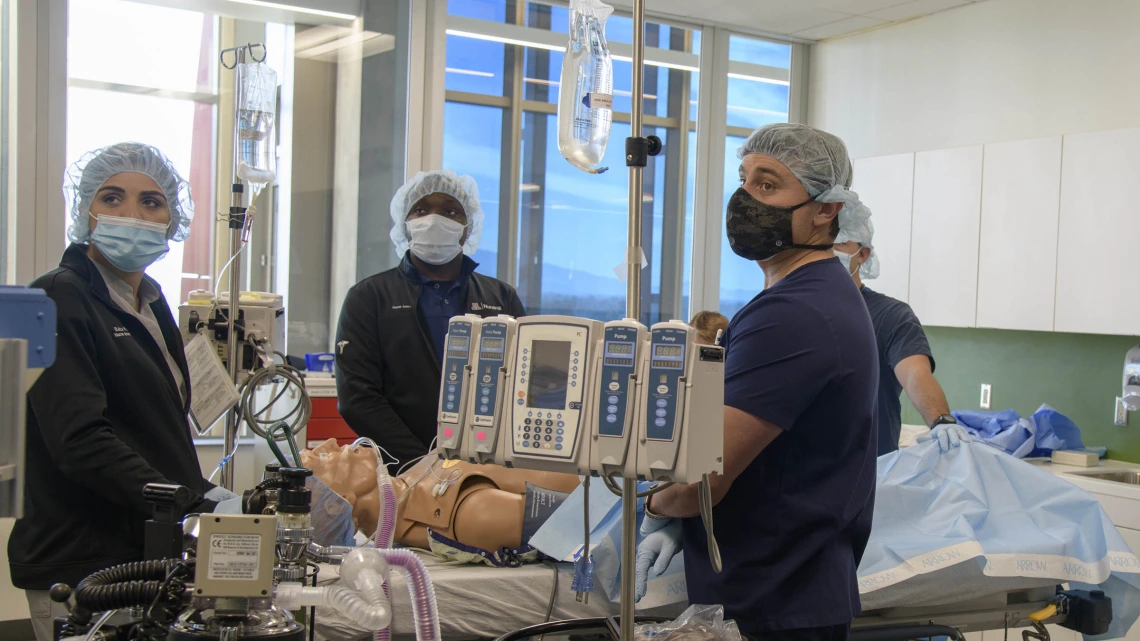
Certified Registered Nurse Anesthetists students watch the monitors in the Arizona Simulation Technology and Education Center after administering medication to a manikin during a simulation.
Evidence-based nursing, technology, diversity and growth. Those four change-focused ideas sum up the 65th anniversary of the University of Arizona College of Nursing for several former students turned faculty.
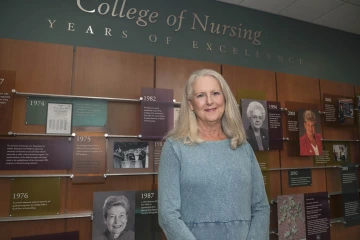
Associate professor Melissa Goldsmith, PhD, RNC, says one of the biggest changes she has seen at the College of Nursing is the availability of online classes, which were nonexistent when she was a student.
Melissa Goldsmith, PhD, RNC, a clinical associate professor, has been a nurse since 1985. She graduated with a doctorate in 2004.
“When I came to the college as a PhD student in 1993, I bet you we had a third of the number of students we have now. The number of program specialties and students here, it's just exploded. And now, of course, we also have our Gilbert campus with both a BSN and MEPN (Master of Science for Entry into the Profession of Nursing) program there,” said Dr. Goldsmith, who is the College of Nursing Alumni Council’s new president.
Among the changes she sees are the transition from traditional to evidence-based nursing; more technology and simulation training; a growth in online programs; a focus on self-care along with patient care to avoid burnout; and an increasing emphasis on diversity.
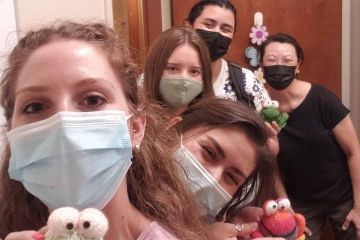
Sharon Hom, PhD, MS, RN (back row), poses with several Nursing students from the Arizona Nursing Inclusive Excellence program.
Assistant clinical professor Sharon Hom, PhD, MS, RN, agreed. She started as a UArizona Health Sciences researcher with degrees in molecular and cellular biology, pharmacology and physiology before earning a bachelor’s in nursing in 2009. She has taught in the BSN and MEPN programs since 2012 and was part of the Integrative Nursing Faculty Fellowship’s first class in 2016.
“Faculty members are strengthening nursing education with programming, so nurses are better prepared to promote health equity, find solutions to reduce health disparities, and explore how best to improve the health and wellness of the populations we serve,” said Dr. Hom, who grew up in a rural farming community in Arizona’s Gila Valley. “Our amazing staff work tirelessly to support these efforts.”
“I’ve never been prouder of the entire College of Nursing community than during the COVID-19 pandemic.”
Sharon Hom, PhD, MS, RN
As an underrepresented minority and first-generation graduate, Dr. Hom supports diversity as an educator and mentor in the Arizona Nursing Inclusive Excellence and Indians in Nursing: Career Advancement and Transition Scholars programs.
Cultivating memories is a precious thing, said Nicole Bencs, DNP, RN-BC, CPNP who earned a bachelor’s in nursing in 2003 and a DNP with a pediatric nurse practitioner specialty in 2014.
“As a student, I think everyone remembers little nuggets and moments along the way from nursing school. They remember a faculty member, or multiple ones, that left an impact of some sort on them,” said Dr. Bencs, a lecturer in the BSN program. “What is really cool is being on the other side, teaching the next generation and hopefully leaving some impact and nuggets to my students to pass on as well.
“Technology is quite a bit different and more advanced today. Students now get to participate in many hands-on experiences with simulation and high-fidelity mannikins,” she added. “One thing students really love that we didn’t have when I was a student is the Arizona Simulation Technology and Education Center in the Health Sciences Innovation Building. They always have a good experience with learning activities there.”
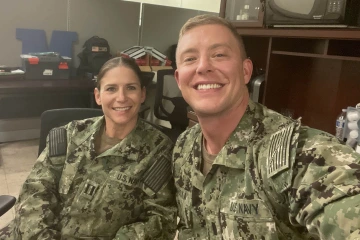
Nicole Bencs, DNP, RN-BC, CPNP, and her former student Jeremiah Palicka, RN, are both in the U.S. Navy Reserves. Palicka is now enrolled in the nurse anesthesia DNP specialty program.
Heidi Kosanke, MSN-Ed, RN, CCRN, shares that perspective. A 2002 BSN graduate, she has been teaching in the MEPN program since 2014.
“There is an amazing feeling of pride when you see a group of students graduate, and it is even more gratifying to work alongside them as a peer and see their continued growth after graduation,” Kosanke said. “I worked on weekends in operating room recovery and loved being able to ‘call report’ to a former student.”
She and Laurel Bilbo, MSN-Ed, RN, a 1986 BSN graduate who joined the faculty in 2013, agree there’s no higher honor than to be recognized by students with a teaching award.
“Receiving the Excellence in Teaching Award in 2020 was a very humbling experience,” Bilbo said. “The students are what bring the greatest joy to this job. Seeing their excitement and lightbulb moments make it all worthwhile.”
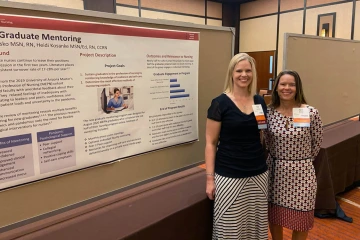
Heidi Kosanke, MSNEd, RN, CCRN (left), and Karin Blasko, RN, BSN, MSN, present their poster on graduate mentoring at the 2021 Arizona Nurses Association fall conference in Chandler, Arizona.
“Workload at bedside is a challenge. Burnout is a challenge. Nurses leaving the field altogether,” Dr. Bencs said. “There are staffing shortages, high turnover, high patient ratios – more demands on nurses in general. While nursing is a very rewarding career, it is also very taxing physically and emotionally. We try to instill and teach our students that self-care and work/life balance are necessities. We encourage them to ‘recharge their batteries’ in ways that are meaningful to them. These tools will carry them forward into their careers.”
“I’ve never been prouder of the entire College of Nursing community than during the COVID-19 pandemic,” Dr. Hom added. “The creativity, innovation, adaptability and flexibility helped us remain academically and fiscally stable as a college despite the challenges we faced.”

